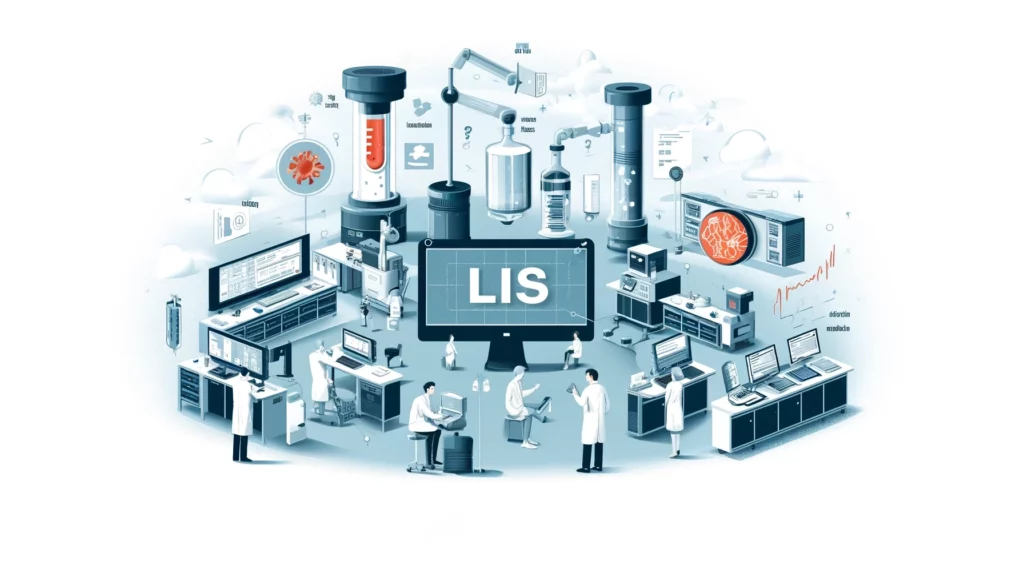What is an LIS and who needs it?
An LIS (Laboratory Information System) is a vital software solution that streamlines and optimizes data management processes within medical laboratories. By automating workflows and ensuring accurate handling of patient data, test results, and compliance records, an LIS plays a crucial role in enhancing patient care and research outcomes. Let’s explore the fundamentals of LIS, its key features, implementation challenges, and future trends.

Comparing LIS With LIMS: The LIS vs. LIMS Distinction
Laboratory Information Systems (LIS) and Laboratory Information Management Systems (LIMS) are critical in data management within laboratory settings. While they share similarities, their core functionalities differ. An LIS is specialized for clinical applications, focusing on patient-centric information, whereas a LIMS is tailored to broader laboratory operations including sample management, workflow automation, and quality control in various industries beyond healthcare.
Choosing between an LIS and a LIMS depends on the laboratory’s primary function. Clinical environments typically benefit more from an LIS, while research and industrial labs may find a LIMS more aligned with their operational needs.
you can read more about the difference between LIS and LIMS here
The Core Functionalities of an LIS
At its core, an LIS is designed to facilitate data entry, storage, retrieval, and management of laboratory test data and associated patient information. This includes order entry, result entry, specimen processing, and maintaining patient demographics. Seamless integration with analytical instruments and other healthcare IT systems ensures efficient information exchange, enabling accurate diagnostics and timely clinical decision-making.
Streamlining Workflows with Key LIS Features From enhancing operational efficiency and reducing manual errors to strengthening regulatory compliance and data security, the key features of an LIS are multifaceted:
- Electronic data exchange and real-time specimen tracking
- Customizable reporting and decision support capabilities
- Improved resource management and communication channels
- Timely access to patient data for personalized care
- Organized experimental data for expedited research
Overcoming LIS Integration Obstacles
While integrating an LIS can be transformative, it’s not without its challenges. Compatibility issues, data migration complexities, user training requirements, and maintaining data privacy are common hurdles. However, these can be mitigated through robust planning, a phased implementation approach, collaboration with experienced IT professionals, comprehensive staff training, regular system audits, and timely software updates.
The Future of LIS: Trends and Innovations
The future of LIS is shaped by trends like artificial intelligence and predictive analytics. Innovations in LIS are expected to enhance predictive capabilities, supporting precision medicine initiatives and enabling more accurate forecasting of test results and patient outcomes.
The Cloud Computing Advantage
Additionally, the increased adoption of cloud-based LIS solutions offers scalability and remote access, facilitating collaboration across global teams and ensuring continuity of operations irrespective of physical location.
In Conclusion
A Laboratory Information System is an indispensable tool for modern healthcare and research environments, where accuracy, efficiency, and security are paramount. By optimizing laboratory operations and enhancing patient care, an LIS has become a vital component of the healthcare IT infrastructure. As technology continues to evolve, LIS platforms will incorporate cutting-edge features, further transforming the landscape of laboratory data management and patient care.

